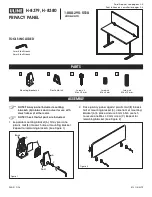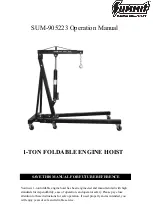
104
Version 1.1, Revision B
Troubleshooting
7
Problem
Possible cause
Corrective action
(continued)
Thick/thin sections
The sections alternate between
being thick and thin, or there
is chattering in the sections,
or the specimen is torn out of
the embedding. In extreme
cases, there are no sections
whatsoever.
(continued)
• The specimen is not clamped
properly.
• The blade is dull.
• The pressure plate is damaged
or incorrectly adjusted.
• Clearance angle of the knife/
blade too small.
• Paraffin is not hard enough for
the conditions.
(continued)
• When using cassettes,
particularly thin-walled
cassettes, from a company
other than Leica Biosystems,
the cassette may become
deformed or other clamping
problems may arise. If while
trying to clamp the cassette
you realize that it is not
securely clamped into place,
an alternative tensioning
clamp must be used.
• Laterally displace the knife/
blade holder, or insert a new
knife/blade.
• Insert a new pressure plate or
use a new two-in-one blade
holder.
• Readjust the pressure plate.
• Systematically try several
clearance angle adjustments,
until the optimum angle is
found.
• Use higher melting point
paraffin or cool the block.
Section compression
The sections are very
compressed, show folds or are
squeezed together.
• The blade is dull.
• The specimen is too warm.
• The sectioning speed is too
fast.
• Use another area of the blade or a
new blade.
• Cool the specimen before section-
ing.
• Reduce the sectioning speed.
"Stripes" in sections
For the two-in-one blade holder
E
• There is an accumulation of
paraffin on the rear pressure
plate of the knife holder.
• The clearance angle is too
steep, as close to zero degree.
• The blade has nicks in the
cutting edge.
• Remove paraffin from this area
on a regular basis.
• Adjust the clearance angle.
• Exchange the blade.
















































